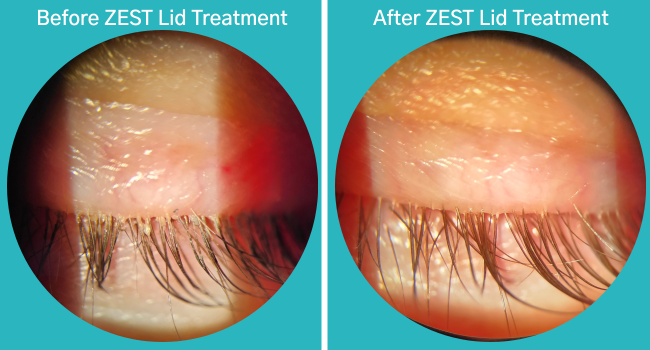HOW OFTEN DO YOU CLEAN YOUR EYELASHES?

Do your eyes often feel uncomfortable? Most people assume that symptoms of burning, itching, redness, tearing, and scratchiness/grittiness are due to dry eyes. Often, they are surprised when our optometrists diagnose a different condition.
“Blepharitis” is an inflammatory disease of the eyelids related to the buildup of debris on the eyelashes and eyelid margins (the edges of the eyelids where the lashes grow). The debris can come from a variety of sources, including dust in the air, eye makeup, secretions from our own tears and glands within the eyelids, and even a tiny body mite known as Demodex. When this buildup becomes chronic, inflammation ensues and symptoms often develop. Long-term blepharitis may cause chronic infections of the eye, loss of eyelashes and may contribute to dry eye disease.
The prevalence of blepharitis has been estimated to be as high as 47% in adults, and may be seen in all age groups including children.
The treatment of blepharitis depends on the cause and the severity of symptoms, and may range from the regular use of lash scrubs, medicated eye drops, and in-office therapeutic procedures. Long-term blepharitis can create a stubborn biofilm which can be difficult to remove.
One of the most popular new treatments for blepharitis is Zesting. This is done in-office by our expert dry eye technicians. A numbing eye drop is used, and a special solvent is applied to the eyelashes using a technique that is very effective at removing long-term buildup and any pathogens such as bacteria or Demodex. Our patients often comment that their eyes have never looked or felt better once they’ve received a ZEST treatment. This is also a commonly prescribed treatment to do before cataract surgery, to ensure the eyelids and lashes are as clean as possible to avoid any risk of infection during the procedure. We typically prescribe ZEST treatments for blepharitis once every six months, or more frequently depending on the severity of the condition.
Your MVO optometrist will be able to review options to manage blepharitis in more detail at your next visit.











